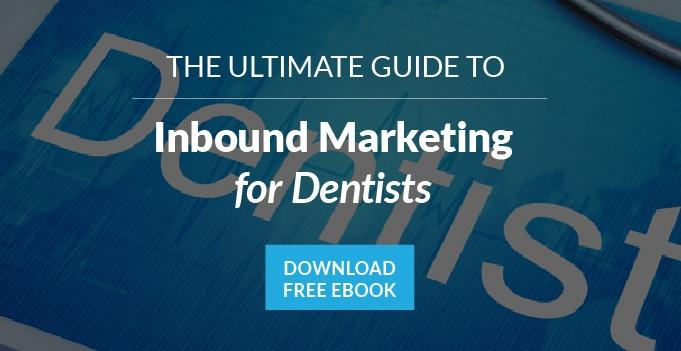 As technology keeps barreling forward, email can seem old and outdated. However, email is still a major part of every day life, especially for marketers. According to research by Gigaom, email marketing is consistently rated as “the most effective for building awareness, acquisition, retention, and conversion.” It has stood the test of time because of its ability to perform in these key areas better than other digital strategies like website optimization, social media, SEO, or advertising.
As technology keeps barreling forward, email can seem old and outdated. However, email is still a major part of every day life, especially for marketers. According to research by Gigaom, email marketing is consistently rated as “the most effective for building awareness, acquisition, retention, and conversion.” It has stood the test of time because of its ability to perform in these key areas better than other digital strategies like website optimization, social media, SEO, or advertising.
Also, because of the prevalence of smart phones, it is easier than ever to stay on top of emails on the go. Campaign Monitor reports that about 53% of emails are opened on mobile devices. This gives incredible power to marketers as they are no longer restricted to reaching consumers at their desks. With 92% of online adults using email and 61% using it every day, you can see why email is still so effective (Pew Research).
As a dentist, you see the value and power of email marketing, but you aren’t sure how your practice could actually make use of this tool. What would you even email people about? Keep reading to find out some strategies, tips, and what to avoid.
Before you start
You learned that every dollar spent on email marketing offers a return of $44 (ExactTarget), and now you want to give it a shot. However, before you start you need to know a few things.
- Decide why you want to start an email marketing campaign
If you just want to make a quick buck, then this might not be the right way to go. Yes, it does have a large ROI (return on investment), but that number is based off well thought out campaigns. You shouldn’t go into this with no idea of the how, what, or why. Do you want to increase your overall patient list? Promote a discount on teeth whitening? Stay engaged with your current patients? There are many reasons to start email marketing, but you need to decide which is best for your practice.
- Who are you going to email?
Email marketing only works if you have people to email. Have you been collecting your patient’s email addresses? Do you have any other ways to gather email addresses such as form fills on your website or requesting them in person? Check out this article by HubSpot on simple ways to grow your email list.
It can be extremely difficult to start building up your list, but every business has to start somewhere. Once you have a list, it is a good idea to segment the list based on different criteria. For dentists, it would be worthwhile to separate regular patients with people that have only visited once or twice. Other segments could be patients and non-patients, which would be good if you are trying to convince people to make an appointment. DMA found that 77% of ROI comes from segmented or targeted campaigns, so don’t ignore this step.
- Are you going to use a software program?
There are tons of different email marketing software programs out there to help manage all the details and measurement. These programs are almost essential for sending bulk emails, especially if you have hundreds or thousands of patients. It would be insane to try to send those one by one or to type in those addresses to every email!
Additionally, these programs allow you to track all sorts of data like open rate, unsubscribes, and click through rate, which will help you measure the success or failure of your email campaigns. Without these analytics, you will be completely in the dark about what is working or not working for you. Listed below are some of the most popular email marketing software and approximate prices.
- MailChimp
- Free, up to 2,000 subscribers and 12,000 email per month
- Pricing increases with number of subscribers and with features. Example: 5,000 subs = $50/month
- Vertical Response
- Free, up to 1,000 contacts and 4,000 emails per month
- Similar pricing structure to MailChimp. Example: 5,000 subs = $55/month
- Constant Contact
- Starts at $20/month, <500 contacts.
- $40/month for 501-2,500 contacts
- Free trial for 60 days
How to write a marketing email
Now that all the basics are in place, you need to know how to write a marketing email. It isn’t exactly the same as the typical email you might be accustomed to sending to friends or acquaintances. Here are the things you need to pay attention to when crafting your email for your subscribers.
- Don’t ignore the subject line
The subject line can make or break your email. Think about how you go through your inbox. For me, one of the first things I look at is the sender followed by the subject line. According to Convince and Convert, 35% of email recipients open email based on subject line alone! Some best practices for subject lines are to keep them below 50 characters, test different ones, and make sure it is relevant to the content.
- Craft an engaging message
Once your subscriber opens the email, you want them to keep reading and engage with it. An open is not enough. Let’s say you are promoting a teeth cleaning special. Is that immediately clear in the email, or does the reader have to get through three paragraphs to figure that out? You want to keep your message short and sweet. With the amount of people reading emails on mobile devices, you don’t want to make them scroll and scroll and scroll.
- Have a call to action
Your emails should have some sort of goal, as I mentioned before. Occasionally, you might send out emails just to connect or alert patients of new hours or new location, but in general, you should be trying to achieve something. For our example of a teeth cleaning special, your email should have a button or clickable link that takes readers to a landing page or form fill to claim the offer.
If you don’t directly tell your readers to do something, they probably won’t do it. Have a sense of urgency and let them know why they should act right away.
- Know when to send your message
Timing is a crucial part of email marketing. You probably won’t get a great response if you are sending emails at 3:00 AM. Often times, people don’t want to open emails after work, so you might have success sending them during the day when many people are already at a computer. Of course, this all depends on the demographics of your patients and email subscribers. The best thing to do is analyze the data of your first few emails and adjust from there. Below is a graph from MailChimp describing optimal send times to give you a starting place.

Summary
Hopefully, this has shown you the value in email marketing as a dentist and how it could help your dental practice grow and increase business. With email marketing, you have the power to reach current or potential patients on a more personal level then something like a commercial or a social media post. Figure out why you want to send an email, what you are going to send, who you are sending it to, and how you are going to send it. If you check all those boxes, you will be in good shape.
As you continuously offer your email subscribers valuable messages, you will likely see your list grow and grow. This can easily translate into more appointments, more chances to upsell patients on certain treatments, and more opportunities to build a relationship with your patient, who might in turn be more likely to recommend your practice to friends and family.


Comments